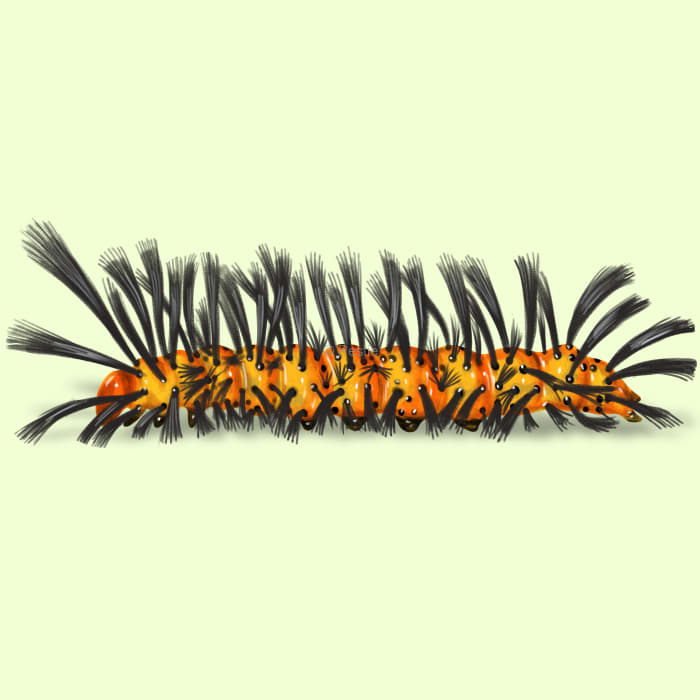How to identify and get rid of oleander caterpillars

Unwanted orange guests: protecting oleanders from caterpillars
If you cherish your oleander plants, both for their beauty and their toxic nature, then you probably understand the perils of their nemesis: the oleander caterpillar.
Imagine coming out into your garden and seeing your beloved oleander plants look a little bare and covered by strange orange caterpillars! That’s the oleander caterpillar, feasting on their favorite meal.
Oleander caterpillars are beautifully bright orange creatures that turn into dazzling, dark moths. The adults mimic the appearance of a wasp to protect themselves from getting eaten. Because the caterpillars feed on a toxic plant, they can also take in those toxins and taste bad to birds and other predators who try to feed on them. Fortunately, other predatory bugs and parasitic wasps don’t mind the toxins and help to control the caterpillars.
The caterpillars often feed in groups, causing severe damage to oleander plants. Each caterpillar has tufts of hair that protect it from predation, but the hairs don’t harm humans.
How to identify oleander caterpillars
Oleander caterpillars are hard to miss with their bright orange colors and black tufts of hair. They will also have black dots in between the tufts of hair. The head is usually bare of any tufts. These caterpillars are usually found munching away on oleander leaves in gardens or in landscapes, leaving behind skeletonized foliage and sometimes completely defoliating plants if left unchecked. Spotting these bright caterpillars or noticing bare branches and lots of frass (caterpillar poop) are sure signs they've made your garden their dining room. They aren’t likely to find their way inside your home.
How big are oleander caterpillars?
They can grow up to 2 inches long.
What other pest looks like an oleander caterpillar?
They might be confused with tussock moth caterpillars, which also have tufts of hair but lack the oleander caterpillar's distinctive orange color.
Where do oleander caterpillars live?
Oleander caterpillars are primarily found in the southern United States, especially in Florida and Georgia, but they can be present in any area where oleanders are grown except California.
How to get rid of oleander caterpillars
Fortunately, there are some methods for removing oleander caterpillars from your garden.
Follow these methods for pest-free oleander plants:
- Manual removal: Wear gloves, pick them off your plants and drop them into a bucket of soapy water.
- Pruning: Cut off heavily infested branches and dispose of them securely. Be careful of the poisonous oleander sap.
- Water spray: A strong jet of water can knock smaller caterpillars off the plants.
Try a solution smart pest control plan from Pestie to keep your home pest-free all year long.
Treat oleander caterpillars with Pestie
If you're still having trouble keeping oleander caterpillars away, the best option is to use a pro-grade, effective pest control solution like Pestie.
Pestie is a do-it-yourself pest control solution that's specially designed to keep oleander caterpillars and other pests away from your home.
With Pestie, you can rest easy knowing that your living space is protected and free of creepy crawlies. And the best part? It's designed for people, pets, and the planet, so you can say goodbye to harsh chemicals and hello to peace of mind!
- Save hundreds compared to traditional annual pest plans
- People, pet, and planet-friendly
- Pro-grade customized formulas
Quick facts
- Scientific name
Syntomeida Epilais
- Other common names
Oleander Moths
- Colors
Caterpillars are bright orange, adults are dark metallic blue
- Life span
1 month
- Diet
Oleander
How dangerous are Oleander Caterpillars?
Low danger risk
While the caterpillars themselves are not harmful to humans, their diet of oleander leaves means they carry toxins.
Oleander isn’t native to the Americas, but oleander moths are. Scientists believe the species switched from their host plant, the devil’s potato, back in the 17th century when the Spanish brought oleander plants to the New World.








